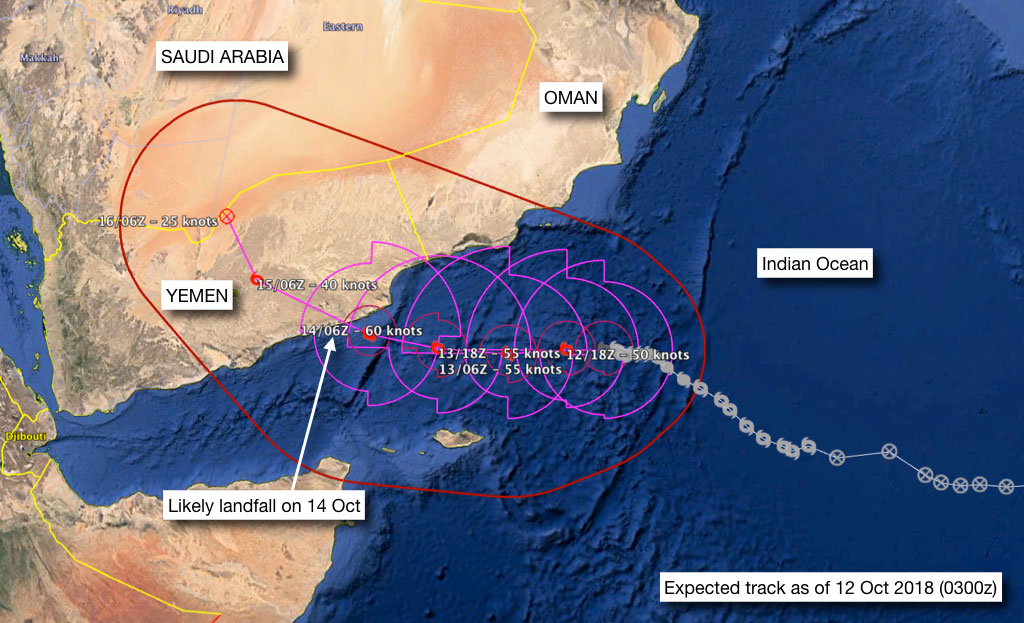Desert Locust situation update 12 October 2018
Cyclone Luban approaches southern Arabian PeninsulaCyclone Luban began forming over the Arabian Sea (northern Indian Ocean) on about 8 October and, since then, it has been moving slowly west towards the Arabian Peninsula with winds increasing to 130 kmph. Scattered rains began falling on the 11th in Al Wusta and Dhofar regions of central and southern Oman with heavier rains forecasted for 13 October. Luban may intensify further before making its expected landfall on the southeastern coast of Yemen between Mukalla and Al Ghaydah on 14 October. Strong winds, heavy rainfall and potential flooding are expected in coastal areas of Al Maharah and portions of Hadramaut governorates in eastern Yemen as well as adjacent areas of southern Oman. The cyclone will decay and dissipate as it moves inland towards Saudi Arabia and the Empty Quarter.
Rains from the cyclone will cause ecological conditions to improve for Desert Locust survival and breeding in both countries. Although, locust numbers are currently very low, regular surveys will be required for several months in eastern Yemen and southern Oman from November onwards in order to detect any response by the locusts to the cyclone.Elsewhere, the current Desert Locust situation remains calm because of limited breeding during the summer in parts of the northern Sahel between Mauritania and western Eritrea. As good rains fell in most places, summer breeding is likely to continue during October while thereafter vegetation will probably start to dry out. This may cause locusts to concentrate in a few areas such as western Mauritania and eastern Sudan. Isolated adults may also appear in areas of recent rainfall in Western Sahara, northern Mauritania and southeast Egypt.
Good rains fell on the Red Sea coastal plains in Saudi Arabia, Yemen and, to a lesser extent, in Eritrea last month that may allow small-scale winter breeding to commence earlier than usual in these areas.
